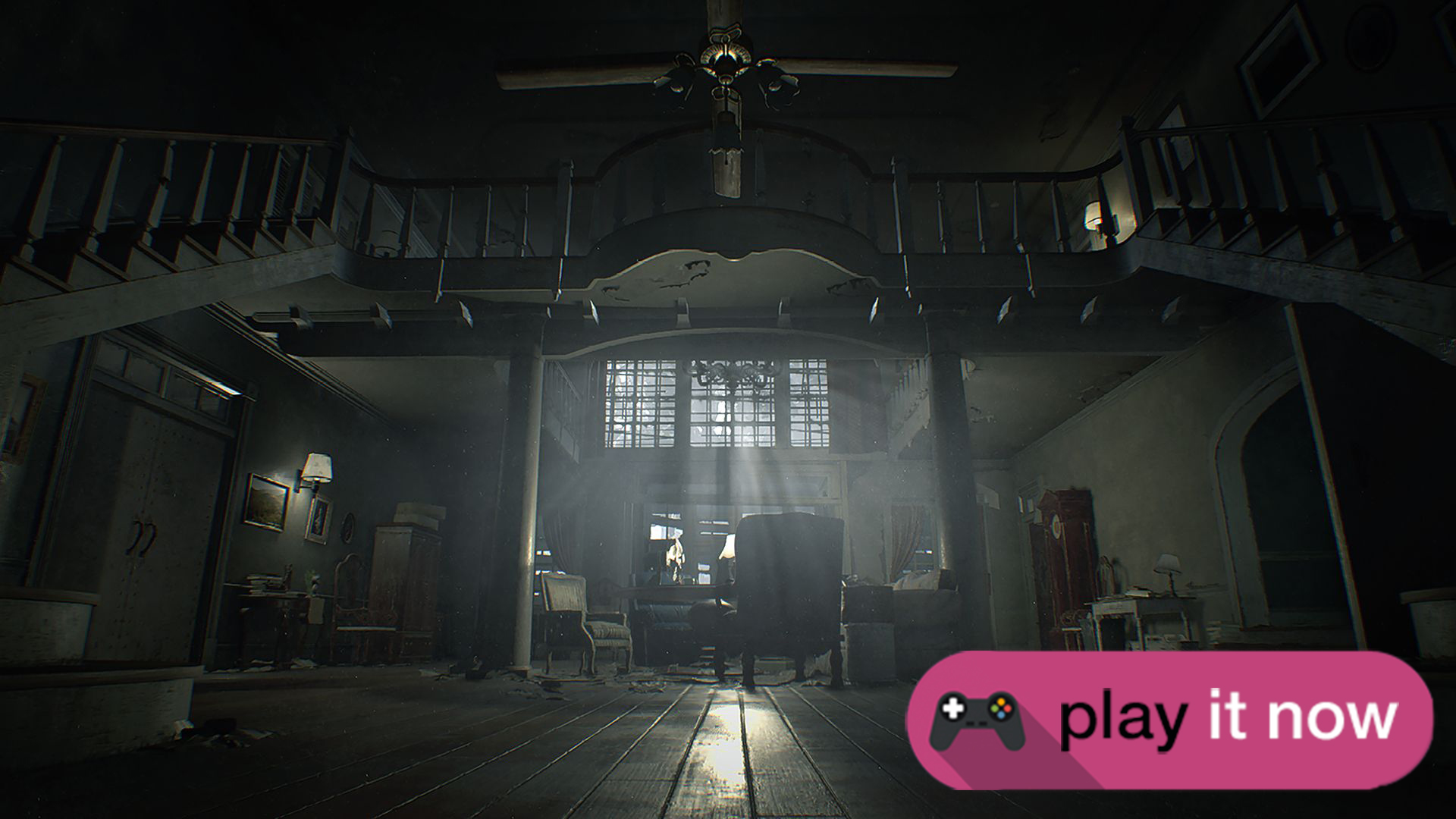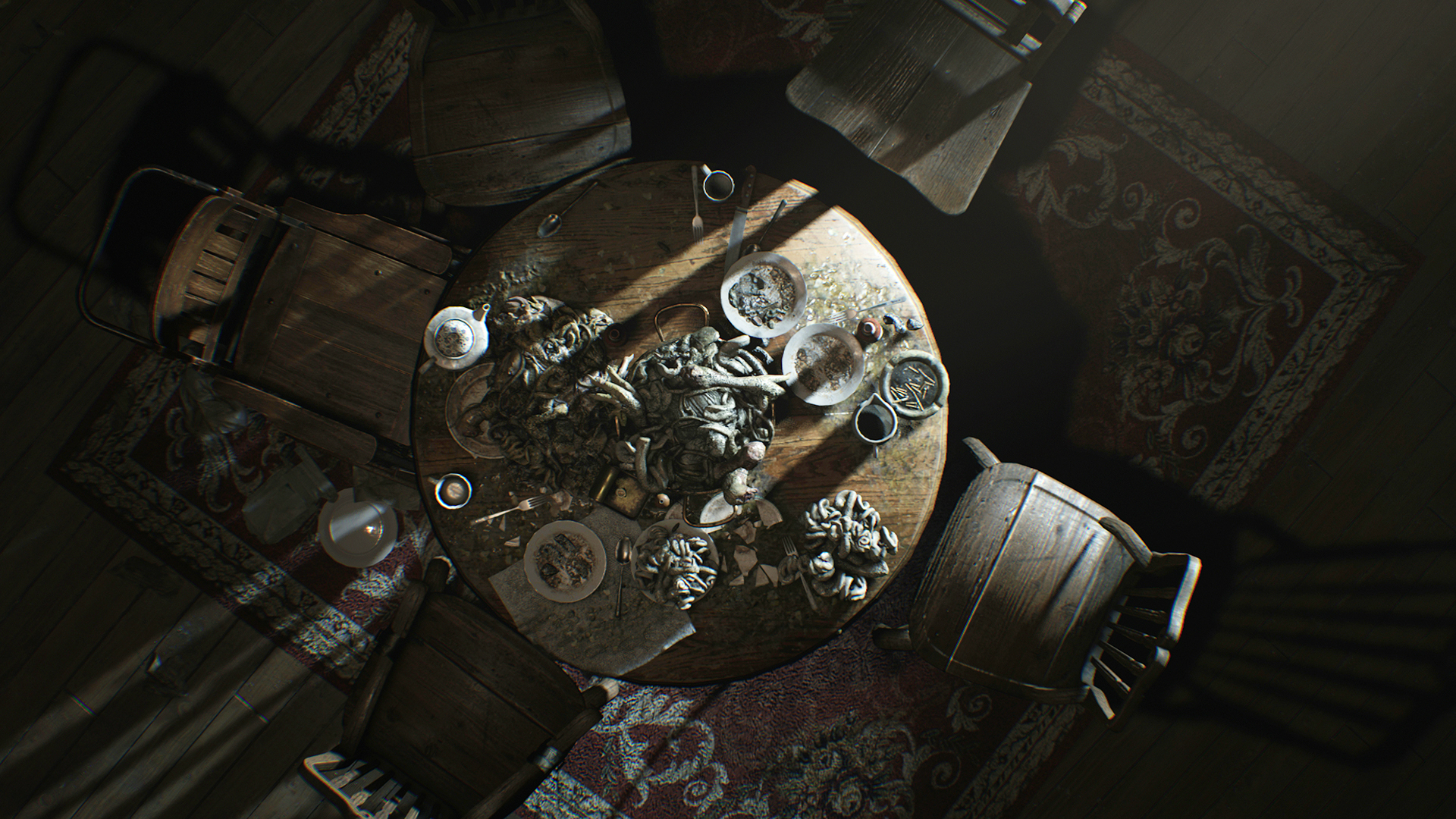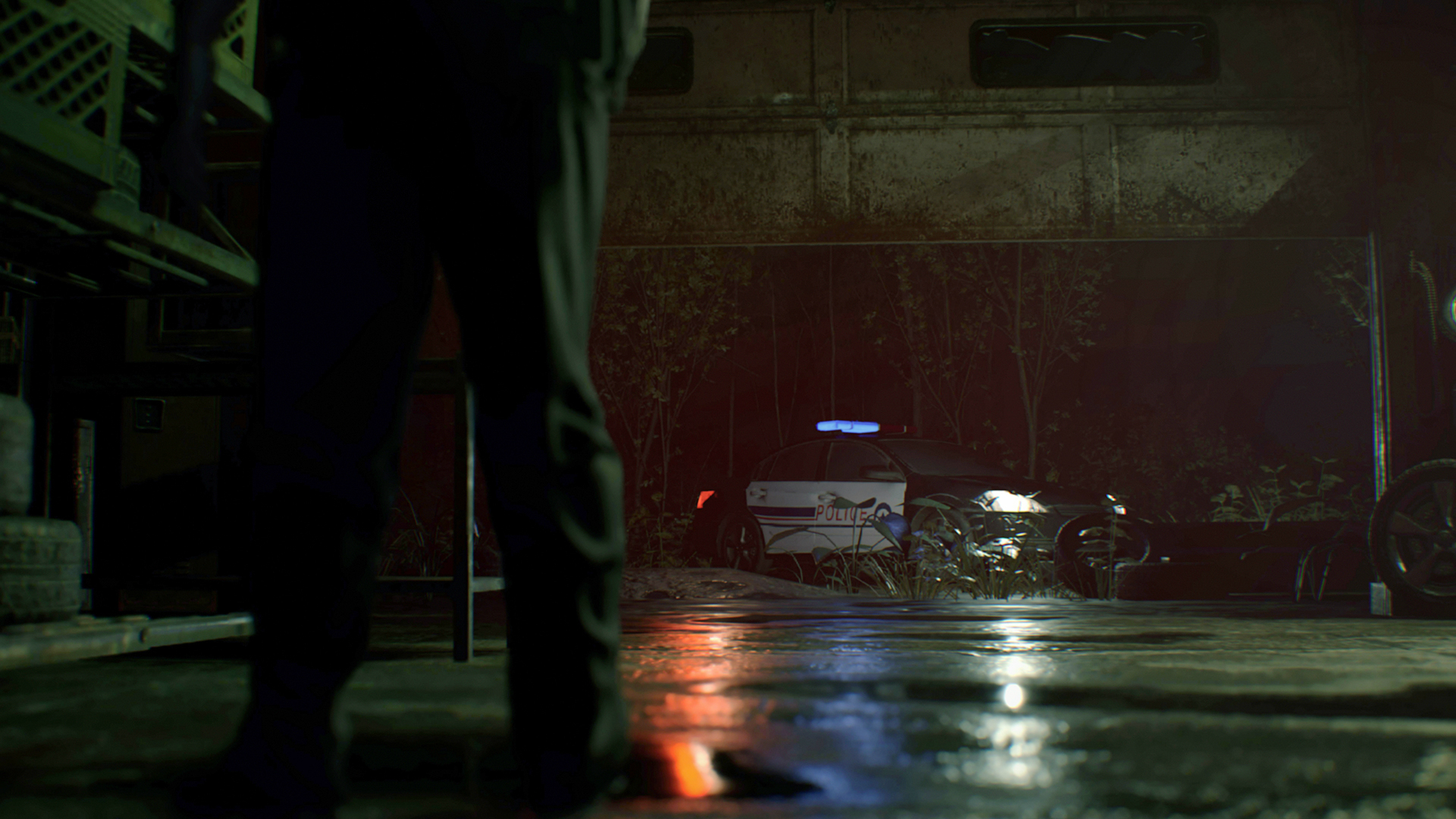Resident Evil 7 review
A chilling return to form

When virtual reality finally hit the mainstream last year, one of the most striking (and unexpected) attributes it brought was the ability to ratchet up horror games to new heights of scariness.
Meanwhile, Capcom was beavering away on Resident Evil 7, the latest iteration of the franchise that put survival-horror games on the map. Happily, the company’s decision-makers grasped the nettle by doing away with the dubious Hollywood-style action sequences that pock-marked 2005’s Resident Evil 5 and 2012’s Resident Evil 6 (both unloved by committed Resident Evil fans), opting instead to take Resident Evil 7 back to the franchise’s horror-centric roots.
The results will reduce those of a nervous or sensitive disposition to quivering wrecks – but should delight anyone who's a fan of real scares.
2 ways 2 play
Resident Evil 7 is playable from start to finish on either a TV or a PlayStation VR headset. Considering how effectively the sense of immersion and presence which VR brings transports anything scary to new heart-skipping heights, playing the whole game in VR amounts to a real test of fortitude.
Capcom has nailed its PlayStation VR adaptation of the game: once you work out that the control scheme works best if you leave it at its default and ignore the right-hand joystick when shooting the game’s mutant enemies (instead aiming by moving your head) you discover that it works like a dream.
There is a pay-off, though: the game noticeably operates in much higher resolution on a TV screen than a PlayStation VR headset. But in virtual reality, the ability to move your head around and peer into things means that you do find objects which you otherwise would have missed.

And, reassuringly for anyone who played the original Resident Evil or its Revelations spin-offs, finding objects is a major component of Resident Evil 7’s gameplay. Notably ammunition (which is always in short supply), keys, new weapons and objects required to solve puzzles.
Sign up for breaking news, reviews, opinion, top tech deals, and more.
As you progress through the game, you encounter an increasingly plentiful and sophisticated number of mutated enemies, and boss-battles occur at regular intervals. In other words, Resident Evil 7’s gameplay is proper survival-horror gameplay with nothing gratuitous added, which is what the franchise’s hardcore fans have been craving for years.
The game’s back-to-basics approach has, however, persuaded Capcom to do away with the series’ recurring characters, a gamble which works well. This means that in its first hour the game feels oddly unlike any previous Resident Evil game, but before long it hits its stride and references to old Resident Evil conventions and popular horror movies start springing up all over the place.
Simple horror beginning
This time around you play series newcomer Ethan Winters whose wife, Mia, has been missing for years. Ethan receives a mysterious video via email from Mia, and his search for her takes him to a creepy, decaying abandoned house in Dulvey, Louisiana.
It immediately becomes obvious that Resident Evil 7 represents a franchise-reboot not least because the familiar third-person Resident Evil viewpoint has been abandoned and replaced with a first-person one.
This was a change made necessary primarily in order to make the game work in VR, but it ends up also proving thoroughly successful. Ethan's slow, ponderous movement, combined with the slow aiming system means the distinctive Resident Evil feel survives the change of perspective utterly unscathed.

At first, though, there are no mutant enemies in sight, so Resident Evil 7 feels more like a conventional horror film which puts you at the controls. Ethan must explore the gloriously fetid, dark and dirty house, collecting whatever objects he can find in order to open up new areas, locate Mia and find out what has been going on in Dulvey. Before long, he finds Mia – but something is seriously wrong with her, to such an extent that she attacks him with a chainsaw. He embeds an axe in her skull, then celebrates by promptly passing out.
When he wakes up in another house in the squalid compound, the game starts in earnest. At first, he is in the clutches of a hilariously twisted redneck family, who delight in self-mutilation and try to force-feed him the innards of a presumably human victim. But a distraction arrives in the form of a local cop, giving him the opportunity to employ stealth, collect some offensive weapons and keys, and work out how to escape from the house. Before long, he is negotiating two of what are by far the funniest (and most atypical) boss-battles ever seen in a Resident Evil game, and discovering that escaping the house, and its various outhouses, will be far from straightforward.
Cute references to Resident Evil games of yore abound: the typewriters which let you save have been replaced by cassette recorders, for example, green herbs still heal you (although you must combine them with “chemical fluid”) and special keys must be located to open up whole areas of the various houses. There are also some very decent puzzles, including some shadow-play ones which sorely test your spatial-recognition skills.
Old meets new
As you progress, the number of typically Resident Evil-style mutated creatures you encounter rises, and you find ever-more-powerful weaponry. As usual, the best and most satisfying weapon is the shotgun. This time around, Capcom has simplified the weaponry by doing away with the chance to upgrade it, and the crucial inventory system has been rendered more friendly and easier to access than previously, although you still have to make extensive use of the containers at save points in order to preserve inventory slots.
Some new elements have been added to the game, most notably VHS videos which you find and activate by putting in VCRs. These show the fates of some of the others who visited the house before you, but put you in the shoes of their characters. The VHS sequences are particularly useful for providing hints on how to survive sequences you will encounter yourself in the future, such as one particularly arcane and delicious puzzle.

Clever re-use is made of various levels and even, hilariously, bosses as they mutate into ever-scarier forms. Resident Evil 7 is pretty linear, but that re-use of levels means it doesn’t feel too linear, at least until it reaches its final, crescendo stages. The story is told mainly without the aid of dialogue (although one victim, Zoe, does offer you help via the telephones dotted around the compound); extensive use of flashbacks continue to sustain the horror-film feel.
How much of the game you feel able to play in VR depends entirely on how brave you are: but the head-aiming works so well that it is possible to play all the way through it – we had no more problems completing boss-battles in VR than on the TV.
There are flaws, though. Firstly, it’s a disappointingly short game for the series: our first, quite leisurely, play-through took around 8 hours. When you finish it the first time, you unlock a new difficulty level entitled Mayhem, along with a few new abilities and weapons, but there isn’t really much by way of replayability – if only it had a similar mode to Resident Evil Revelations’ Raid Mode, which was essentially a zombie-wave survival game like Call of Duty’s zombies. And the cut-off arms that your character has in VR create an annoying disconnect, even if they do rarely enter into view.

Verdict: Play it now
In returning to its roots, Resident Evil 7 has refound its mojo. It’s truly, viscerally scary in the most delicious way, and its haunted-house setting is so gleefully disgusting that you never cease to marvel. Having been forced into a reboot due to the advent of VR, Resident Evil has inadvertently returned to what made it great in the first place. If you have the stomach for horror, you'll absolutely love it.
Resident Evil 7 is the series at its most deliciously and creepy, with the survival-horror gameplay that made it great in the first place. Be afraid.